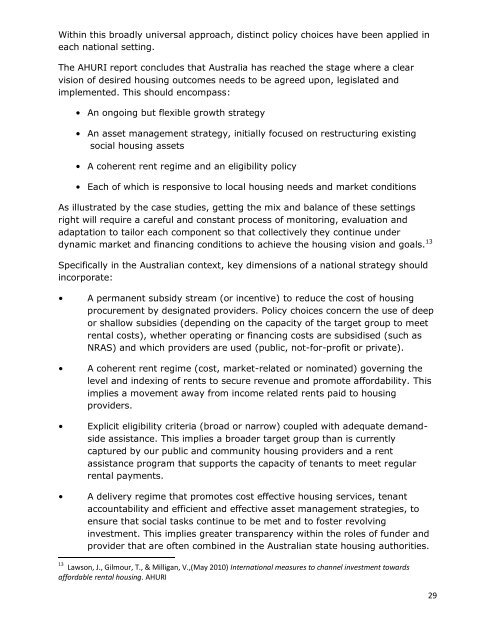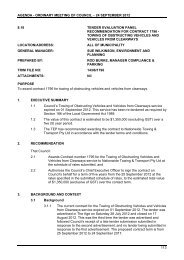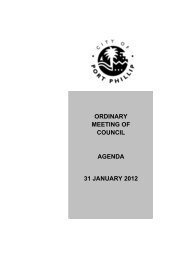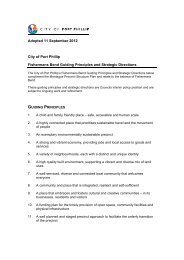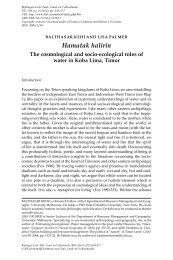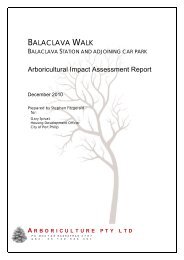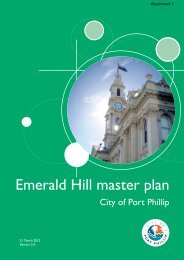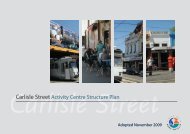affordable housing development models - City of Port Phillip
affordable housing development models - City of Port Phillip
affordable housing development models - City of Port Phillip
You also want an ePaper? Increase the reach of your titles
YUMPU automatically turns print PDFs into web optimized ePapers that Google loves.
Within this broadly universal approach, distinct policy choices have been applied in<br />
each national setting.<br />
The AHURI report concludes that Australia has reached the stage where a clear<br />
vision <strong>of</strong> desired <strong>housing</strong> outcomes needs to be agreed upon, legislated and<br />
implemented. This should encompass:<br />
• An ongoing but flexible growth strategy<br />
• An asset management strategy, initially focused on restructuring existing<br />
social <strong>housing</strong> assets<br />
• A coherent rent regime and an eligibility policy<br />
• Each <strong>of</strong> which is responsive to local <strong>housing</strong> needs and market conditions<br />
As illustrated by the case studies, getting the mix and balance <strong>of</strong> these settings<br />
right will require a careful and constant process <strong>of</strong> monitoring, evaluation and<br />
adaptation to tailor each component so that collectively they continue under<br />
dynamic market and financing conditions to achieve the <strong>housing</strong> vision and goals. 13<br />
Specifically in the Australian context, key dimensions <strong>of</strong> a national strategy should<br />
incorporate:<br />
• A permanent subsidy stream (or incentive) to reduce the cost <strong>of</strong> <strong>housing</strong><br />
procurement by designated providers. Policy choices concern the use <strong>of</strong> deep<br />
or shallow subsidies (depending on the capacity <strong>of</strong> the target group to meet<br />
rental costs), whether operating or financing costs are subsidised (such as<br />
NRAS) and which providers are used (public, not-for-pr<strong>of</strong>it or private).<br />
• A coherent rent regime (cost, market-related or nominated) governing the<br />
level and indexing <strong>of</strong> rents to secure revenue and promote affordability. This<br />
implies a movement away from income related rents paid to <strong>housing</strong><br />
providers.<br />
• Explicit eligibility criteria (broad or narrow) coupled with adequate demandside<br />
assistance. This implies a broader target group than is currently<br />
captured by our public and community <strong>housing</strong> providers and a rent<br />
assistance program that supports the capacity <strong>of</strong> tenants to meet regular<br />
rental payments.<br />
• A delivery regime that promotes cost effective <strong>housing</strong> services, tenant<br />
accountability and efficient and effective asset management strategies, to<br />
ensure that social tasks continue to be met and to foster revolving<br />
investment. This implies greater transparency within the roles <strong>of</strong> funder and<br />
provider that are <strong>of</strong>ten combined in the Australian state <strong>housing</strong> authorities.<br />
13 Lawson, J., Gilmour, T., & Milligan, V.,(May 2010) International measures to channel investment towards<br />
<strong>affordable</strong> rental <strong>housing</strong>. AHURI<br />
29


